by Hanan Greenwood
Autonomous vehicles, drones, and specialized tactical gear are poised to take over the battlefield. "Our vision is that entire theaters will fight autonomously, without a single human being directly involved," Elbit System experts say.
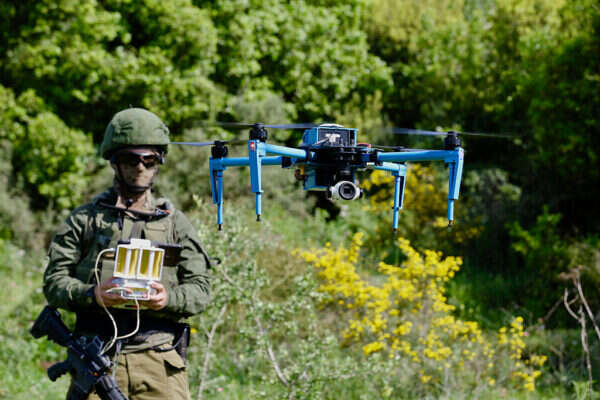 |
| For military drones, the sky is no limit | File photo: Oren Cohen |
Think about any science fiction war movie you have seen lately: augmented reality binoculars providing information to soldiers in the field; drones eliminating threats from a great distance and providing precise intelligence to a force behind cover; autonomous vehicles operating in an urban setting without any human presence. A lot of the things you will have seen however are no longer science fiction, and are possessed by militaries around the world, with the IDF leading the field.
"Our vision is that entire theaters will fight autonomously, without a single human being directly involved in the fighting," say engineers from Elbit's C4i division, explaining how they see the battlefield of the future. Elbit is where a lot of the most classified technologies in the IDF are being developed; some of them are already changing the battlefield. "In the future, which is no longer in the realm of science fiction, entire areas of the battlefield will be fought with autonomous means, without a single human. The robots will report back that they have completed their mission and we will return to routine."
My visit is the first-ever by a journalist to Elbit's classified labs in the heart of Netanya. Around 50 percent of what we saw is prohibited for publication due to considerations of state security. What can be said is that some of the technologies being developed here will significantly change the battlefield and will save soldiers' lives in the next war or in future operations. If you were to see them, you would think they were coming straight out of a movie.
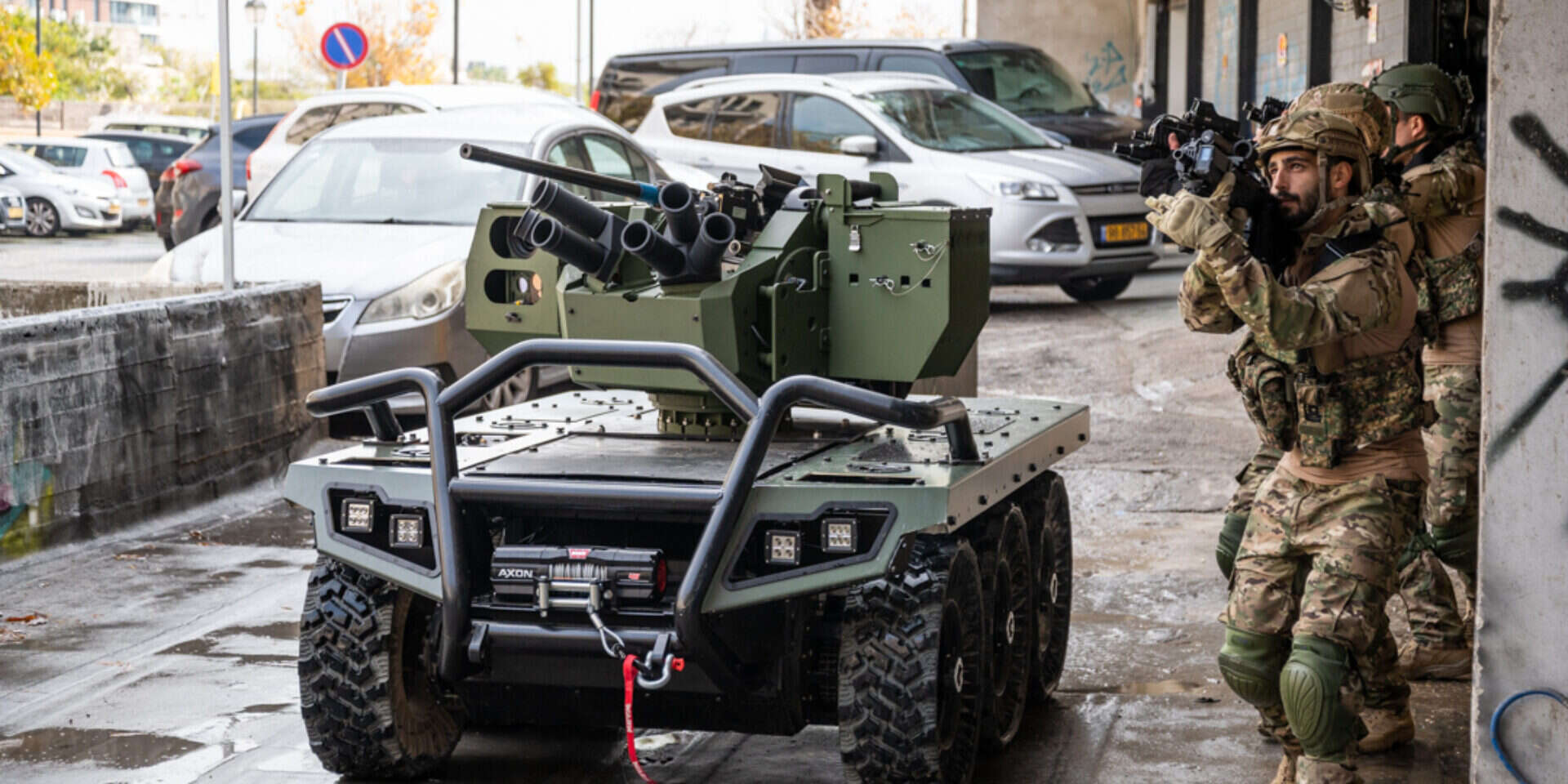
You don't have to look into the distant future to see enormous technological developments and how they are entering service in the IDF, which is considered one of the armies that is assimilating advanced technologies quickly. Among other things, this is due to its relatively small size, which enables it to equip its soldiers with advanced tools without having to pay the enormous sums required to assimilate these tools in large militaries. The IDF has already brought into service autonomous and robotic vehicles, as well as drones on a large scale. It has also assimilated night vision systems for almost all infantry soldiers.
Digital ground army systems that operate in tanks, vehicles and even in the sophisticated "Shaked" smartphone, which is used by infantry officers and provides immediate information on force deployment, the enemy's position and targets for immediate strikes that are updated by intelligence personnel in real-time. What is the jewel in the crown of all these advanced systems? You'll be surprised to discover that it is the MK 77 and 624 radio transceivers, which anyone who has served in a combat role in the IDF will be familiar with. But we will come back to them later.
The most significant change can already be seen shortly after soldiers are conscripted into the IDF. Colonel (res.) Arik Avivi, the outgoing head of the weapons department at the ground forces command, reveals that the IDF will soon bring into service simulators for light weapons training. This, he says, will save the army a fortune and better prepare soldiers for combat, as from the outset they will be able to train in challenging terrain instead of shooting at cardboard cut-out figures on the firing range.
"We have already started constructing a combat training facility at the Nahal Brigade training base that will be entirely based on the use of the simulator. It's a revolution. We will save 100% ammunition; we will shorten training time and we will improve the professional level of the soldiers." Reservists are already using a simulator at the Sorek Base that within hours prepares them for combat in complex urban environments. In the near future, all combatants will train like that.
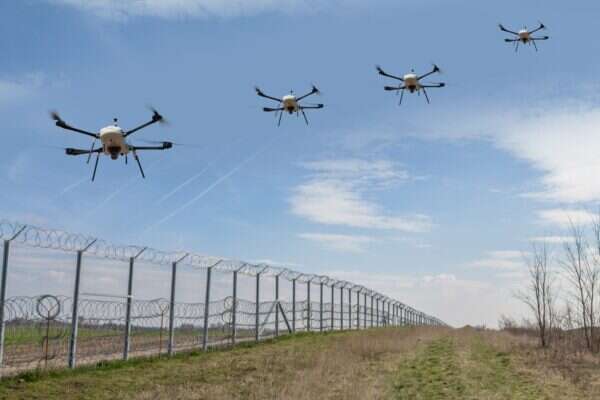
Personal equipment has also been significantly upgraded. If in the past only soldiers from special forces units received night vision goggles for each soldier, while in the infantry battalions only commanders, snipers, and a few individual soldiers would be allocated such equipment, today the battalions are fully equipped as the IDF has understood that optimal fighting capabilities need to be assured into darkness. Other projects in the works are enabling combatants to identify enemy fighters using digital means, and a "smart glasses" project aims to transfer data without any need for touch. The U.S. Army is currently conducting a large pilot program to introduce smart glasses for its combat soldiers, and we can expect to see such technologies reach the IDF as well.
About two years ago, a special tech combatant unit was set up within the elite IDF Paratrooper Brigade Reconnaissance Battalion (Sayeret Tzanchanim). The soldiers specialize in using specialist equipment on the battlefield. But this is just the tip of the iceberg when it comes to the introduction of special capabilities to the infantry brigades - and that means that in the very near future, soldiers from the Golani, Paratrooper Nahal, Givati and Kfir brigades will have more capabilities than soldiers from cohorts just a couple of years previously could only have dreamed of.
"The trend in the coming years will be to provide tactical forces with more specialist equipment. In the past, when we brought new weapons to the division, commanders would decide where to allocate it. Today that is no longer the case. I haven't given new weapons to the divisions for four years because I know they are taken care of - I want to give them to the battalions and companies," says Colonel Avivi. "All new weapons are given first to the reconnaissance units because the personnel are of higher quality. We learn from them and if everything works out, we send it down to the battalions."
One development that is already in the final stages of testing is advanced ammunition for grenade launchers, a weapon that is in use with many soldiers in the infantry battalions. "We plan to give the combatants a more precise and deadly grenade based on 40-millimeter caliber munitions. Imagine a weapon like the LAU anti-tank missile, only it is fired using a grenade launcher that a lot of combatants in the field currently use."
Drones will eliminate terrorists
But all of that is just a promo for what soldiers in standing army battalions will receive in the near future. During Operation Guardian of the Walls earlier this year the Sayeret Tzanchanim tech unit used a new drone called "Maoz'' (Firefly) produced by Rafael Advanced Defense Systems. The Firefly is a loitering munitions system that can locate and attack targets at a range of 1,000 meters or 500 meters in urban environments. It carries a 350-gram warhead and dives at a speed of 70 kph before exploding on its target.
Avivi reveals that 15 IDF operational battalions are about to receive the Firefly, which will constitute a significant force multiplier in any future conflict. Company commanders already have observation and intelligence drones, and now they will receive a weapon that will enable them to operate without exposing themselves. "Maoz is a lethal drone that when a terrorist is identified will close the circuit and blow itself on them. A lot of these tools will be available to the IDF very soon."
During Guardian of the Walls, Sayeret Tzanchanim employed drone swarms, a tactic that will be increasingly used already in the near future. However, in the future less drones will be employed as they will be able to travel further and carry larger warheads, requiring less of the tools to achieve the same effect.
With all due respect to face-to-face physical skirmishes, combat is becoming more and more about intelligence, and a commander who doesn't make use of intelligence capabilities will find himself at a disadvantage, endangering himself and his soldiers. Every battalion and company commander today has intelligence drones and because they have become so ubiquitous and cheap, they are no longer fixed if they break as it is more cost-effective just to replace them. These drones provide short-term intelligence to tactical forces and provide commanders with up-to-date situational intelligence.
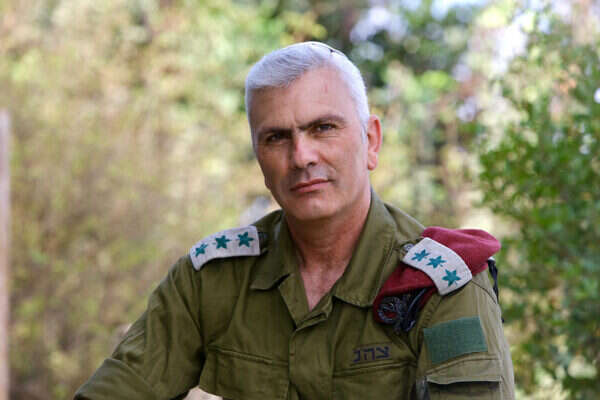
One of the most advanced tools in IDF use today, and one that is being revealed here for the first time is what the IDF has dubbed "seismic pearls", small circular sensors just a few centimeters wide that carry an antenna. During the next war, thousands of these devices will be dropped from planes and drones, and will be able to detect movement on the ground. "The seismic sensors were envisioned by the late Shimon Peres, who set up an NGO called Pearls of Wisdom. He said following the Second Lebanon War that there is no need for planes to fly back and forth and that we would create advanced appliances that are capable of tracking terrorists. The vision is that in the future the pearls will be the size of a droplet." In practice, the pearls can't be located once they have been dropped because they are so small. They will be able to provide intelligence in the field and give an up-to-date situational picture to digital ground army systems.
"As an officer in the Second Lebanon War, I remember situations of friendly fire that occurred because I couldn't understand who was on the other side of the hill just a kilometer-and-a-half away," recalls a senior official who accompanied us on the tour of the Elbit campus. This has changed at unprecedented speed, and it looks like in the future the changes will even be a lot more dramatic. Elbit is currently developing a 15-centimeter drone with the aim of sending it into hostile territory equipped with sensors so that Israeli forces will be able to identify the enemy without endangering themselves. "Our vision is that these miniature drones will enter buildings and fly between trees, and at the same time the sensors that we have dropped between rocks, will provide intelligence. The seismic pearls work for a few days and can do the work deep in enemy territory without us being there."
The jewel in the crown of Elbit's technological developments, one that pulls together all the digital capabilities of the ground army, is the digital ground army system that is a kind of digital navigation system on steroids. An encrypted system is installed on every armored vehicle, tank, and Namer Armored Personnel Carrier and even on special IDF smartphones; the system provides real-time information about the location of friendly forces, terrorists and targets. This system received a major update a few months ago.
One cannot exaggerate the role of this system in changing the battlefield. It provides an up-to-date real-time picture of events at any given moment using all the means available in the field; from soldiers in Unit 8200 and the intelligence branch in Tel Aviv through to planes and UAVs, with tanks providing their angle, navy ships adding their perspective, if necessary, all the way down to the Golani infantry brigade soldier crouched behind a wall, with terrorists only tens of meters away from him.
"The system has input from the chiefs of staff at the Pit down to infantrymen in the field. We can analyze what the soldiers in the field can see and from that construct an ambush on a target and destroy it," say the engineers from Elbit's C4i division. "The system allows threat locations and enables us to prioritize. If in the Second Lebanon War, intelligence from Unit 8200 took half an hour to reach a battalion commander and only then made its way down to troops on the ground, now all of that will happen in seconds.
"We will be able to transmit to a soldier's smartphone where the enemy is to a greater degree of certainty and to enable him to view the battlefield through the cameras of a ship or plane and other means. Every platoon commander will know how to create targets, to open a live chat with all the relevant elements, and to request an immediate strike if needed. Our vision is that already during the next campaign we will see a lot of video-based combat - they will be able to see from a plane or UAV in real-time. These processes will help us keep our soldiers safe and on the other hand to conduct strikes that are far more accurate," say the Elbit engineers. We should note that none of this is science fiction; it is all already in use in the IDF.
"The digital ground army gives us intelligence that we have never had before. There is nothing like it anywhere in the world. It's in another league. We let Elbit know everything we need and they supply us with the capabilities," explains Colonel Avivi. "We have the ability to close circles of fire, to connect to the air force, whatever we want. If we had these capabilities in previous operations such as Defensive Shield. We would have lost far fewer soldiers. It's true that soldiers knew how to orient themselves before the digital ground army, but it's like the Waze navigation app - it's a backup. Training will still teach soldiers to be able to cope without technology, but why should I want to prevent a soldier from getting stuck in a traffic jam? We save lives with these means."
In the future, the IDF will be able to monitor each and every soldier on the battlefield and thus to know how the force is deployed and even whether a soldier has been kidnapped - and where he has been taken. A few weeks ago, soldiers from the Refaim (Ghost) Multidimensional Unit conducted an experiment at the Smart-Tech facility with an appliance the size of a packet of cigarettes. The idea is that from next year, if everything works out, thousands of soldiers will already be equipped with the devices.
There is one thing that is essential in order to provide the full intelligence picture, operate the digital ground army, the drones and the rest of the classified equipment that soldiers will use in the next war - an internet connection, even in areas without reception. And this is where radio transceivers - those burdensome boxes that soldiers carry on their backs - come in. The soldiers may see them as a tool for commanders to speak with each other, but for the IDF they are the most significant factor in the next war.
"We are in the midst of creating a revolution that will enable a quantum leap in the battlefield," say the folks at Elbit. They clarify that they are not in any way exaggerating. "We are bringing the radio of the future to the IDF. Currently, you can only be a champion gamer if you have a powerful computer, and here the goal is to make our soldiers the most lethal and efficient in the world. Today we have a cellular device that is connected to radio and can generate operational internet in the battlefield."
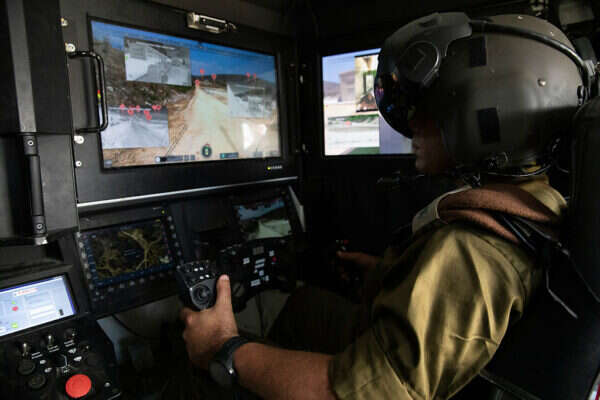
Over the past few years, the IDF has been working to dramatically improve coordination between its various branches so as to enable real-time data transfer and create efficient mutual strike capabilities, among other things through the use of advanced digital appliances. About two months ago, an advanced pilot exercise was held in the Golan Heights with the aim of integrating Air Force and Military Intelligence personnel into ground force units. Pilots and intelligence officers joined in the exercise held by a battalion battle team - tanks, infantry, artillery UAVs and more. They experienced what war looks like in practice, not via the screen at the IDF headquarters in the Kirya.
"These officers are doing holy work but they do it from offices in the Kirya. Now however they have been inside a tank and fired shells, and they understand how the intelligence they generate from back there serves the last mile of the maneuvering force," explains Artillery Corps commander, Brigadier-General Neri Horowitz. "The officers slept in the field, ate battle rations and gained a better understanding of operational processes. We are conducting a lot of digitization processes, but there is no replacement to knowing how to work together. After we drop those officers off in the field, then the guys from military intelligence understand better how things work on the ground and how to better operate the digital ground army."
The exercise comes alongside another project that is currently taking shape in the IDF, the Sufa (assistance and assault) teams. For the first time, alongside artillery support officers, whose role is to coordinate between artillery batteries and fighting forces on the ground, battalions will also have aerial support officers and soldiers who have been trained as assault NCOs, whose role will be to locate and map targets and coordinate artillery fire, missile fire and aerial assault vehicles - that will be operated via technological means and command and control systems, including the digital ground army.
"Robotic technology is being developed around the world at a dizzying pace. Technologically we are there. There is no alternative to a ground maneuver to win a war, it cannot be done without it, but we can provide the ground forces with tools that will prevent unnecessary loss of life and change the battlefield," says Colonel Avivi, summing up the revolution that is currently taking place in the IDF.
Hanan Greenwood
Source: https://www.israelhayom.com/2021/10/11/sci-fi-style-weapons-aim-to-change-future-of-warfare/
No comments:
Post a Comment